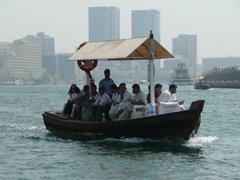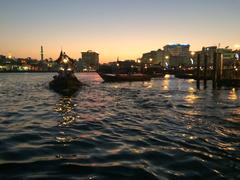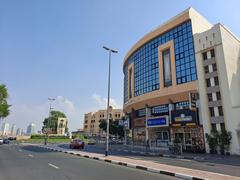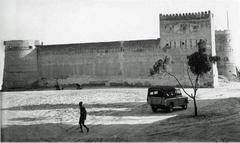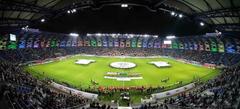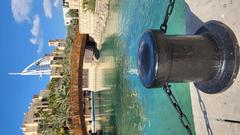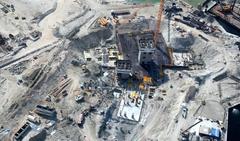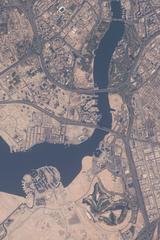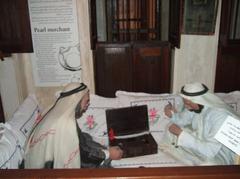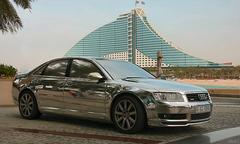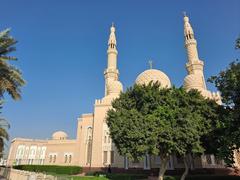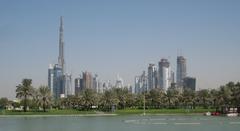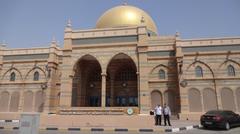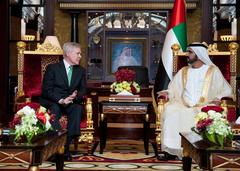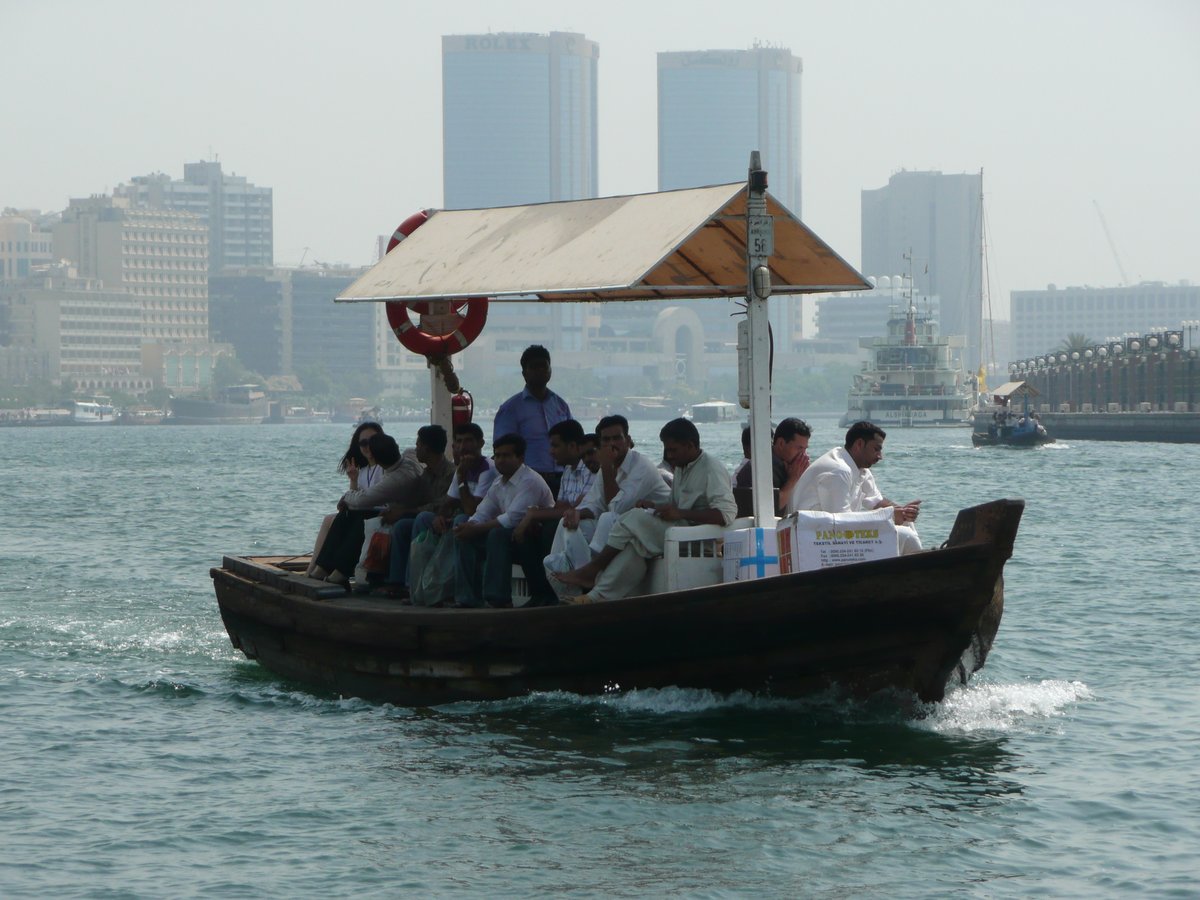
Comprehensive Guide to Visiting Deira Old Souk, Dubai, United Arab Emirates
Date: 01/08/2024
Introduction
Deira Old Souk, nestled in the heart of Dubai’s Deira district, stands as a vibrant testament to the city’s rich cultural tapestry and historical significance. This bustling marketplace, often referred to as the Deira Covered Souk, has been a cornerstone of Dubai’s economic and social life since the early 20th century. Positioned strategically along the Dubai Creek, the souk became a vital trading hub, attracting merchants from across the Middle East, Africa, and Asia, who brought with them an array of goods, including spices, textiles, and precious metals (National Geographic).
Over the decades, Deira Old Souk has evolved from a local marketplace into a major tourist attraction, mirroring Dubai’s transformation from a modest trading port into a global metropolis. Despite these changes, the souk has retained its historical charm and continues to offer visitors an immersive experience that combines the old with the new. The narrow alleyways, traditional wooden stalls, and the vibrant atmosphere provide a unique window into the past, allowing visitors to experience the traditional way of life in Dubai (Travel Setu).
The souk is also a cultural melting pot, reflecting Dubai’s diverse heritage. It is home to several historical landmarks, such as the Al Ahmadiya School and the Heritage House, which offer deeper insights into the city’s rich history. Architecturally, the souk is a marvel, featuring traditional elements like wind towers and wooden arches that serve both aesthetic and practical purposes (We Heart).
In addition to its cultural and historical significance, Deira Old Souk continues to play a crucial role in Dubai’s economy. The myriad shops and stalls offer a wide range of products, from gold and jewelry to spices and textiles, providing livelihoods for many local traders and artisans. The souk’s ongoing preservation efforts underscore Dubai’s commitment to maintaining its cultural heritage while embracing modernity (National Geographic).
Table of Contents
- [Historical Background](#historical-backgroundhistorical-background)
- [Evolution Over Time](#evolution-over-timeevolution-over-time)
- [Cultural Significance](#cultural-significancecultural-significance)
- [Economic Impact](#economic-impacteconomic-impact)
- [Architectural Features](#architectural-featuresarchitectural-features)
- [Preservation Efforts](#preservation-effortspreservation-efforts)
- [Modern Developments](#modern-developmentsmodern-developments)
- [Visitor Experience](#visitor-experiencevisitor-experience)
- [Tips for Visitors](#tips-for-visitorstips-for-visitors)
- [Dress Modestly](#dress-modestlydress-modestly)
- [Best Time to Visit](#best-time-to-visitbest-time-to-visit)
- [Getting Around](#getting-aroundgetting-around)
- [Visitor Information](#visitor-informationvisitor-information)
- [Visiting Hours](#visiting-hoursvisiting-hours)
- [Ticket Prices](#ticket-pricesticket-prices)
- [Guided Tours](#guided-toursguided-tours)
- [Accessibility](#accessibilityaccessibility)
- [Nearby Attractions](#nearby-attractionsnearby-attractions)
- [Conclusion](#conclusionconclusion)
- [FAQ](#faqfaq)
Historical Background
Deira Old Souk, located in the heart of Deira, Dubai, is one of the oldest and most historically significant markets in the region. Its origins date back to the early 20th century, when Deira was a bustling port and a key trading hub on the route between the western and eastern regions. The souk’s strategic location along the Dubai Creek made it a focal point for merchants from across the Middle East, Africa, and Asia, who brought with them a variety of goods, including spices, textiles, and precious metals (National Geographic).
Evolution Over Time
Initially, Deira Old Souk was primarily a marketplace for local traders and residents. However, as Dubai began to grow and modernize, the souk evolved into a major tourist attraction. The transformation of Deira from a traditional trading center to a modern tourist destination is a testament to Dubai’s dynamic evolution. The souk has managed to retain its historical charm while embracing contemporary tourism trends, making it a unique blend of the old and the new (Travel Setu).
Cultural Significance
Deira Old Souk is not just a marketplace; it is a cultural melting pot that reflects the rich heritage of Dubai. The souk is a living museum where visitors can experience the traditional way of life in Dubai. The narrow alleyways, traditional wooden stalls, and the vibrant atmosphere provide a glimpse into the past. The souk is also home to several historical landmarks, including the Al Ahmadiya School, which is one of the oldest schools in Dubai, and the Heritage House, a traditional Emirati home that has been converted into a museum (We Heart).
Economic Impact
The economic significance of Deira Old Souk cannot be overstated. Historically, the souk was a major center for trade and commerce, contributing significantly to the local economy. Today, it continues to play a vital role in Dubai’s economy by attracting tourists from around the world. The souk’s numerous shops and stalls offer a wide range of products, from spices and textiles to gold and jewelry, providing a livelihood for many local traders and artisans (National Geographic).
Architectural Features
One of the most striking features of Deira Old Souk is its traditional architecture. The souk is characterized by its narrow lanes, wooden arches, and wind towers, which are traditional cooling structures used in the region. These architectural elements not only add to the aesthetic appeal of the souk but also serve practical purposes, such as providing shade and ventilation. The preservation of these architectural features is a testament to Dubai’s commitment to preserving its cultural heritage (We Heart).
Preservation Efforts
In recent years, there have been concerted efforts to preserve and restore many of the historical sites in Deira Old Souk. The Dubai government has undertaken several initiatives to protect the city’s cultural heritage, including the restoration of iconic landmarks such as the Clock Tower in Deira. These efforts not only enhance the experience for tourists but also ensure that future generations can appreciate the rich history and culture of Dubai (We Heart).
Modern Developments
While Deira Old Souk has retained its historical charm, it has also embraced modern developments to cater to the needs of contemporary tourists. The souk now features modern amenities such as air-conditioned shops, cafes, and restaurants, providing a comfortable shopping experience for visitors. Additionally, the integration of technology in tourism services, such as smart services provided by hotels and tourism businesses, ensures a seamless experience for travelers (Travel Setu).
Visitor Experience
Visiting Deira Old Souk is a sensory experience that engages all the senses. The air is filled with the aromas of exotic spices, herbs, and perfumes, while the vibrant colors of textiles and jewelry create a visual feast. Visitors can haggle with shopkeepers, sample traditional Emirati cuisine, and take a ride on an abra, a traditional wooden boat, across the Dubai Creek. These experiences provide a unique insight into the traditional way of life in Dubai and make for a memorable visit (National Geographic).
Tips for Visitors
Dress Modestly
When visiting cultural and religious sites, it is important to dress modestly. Men should wear long trousers and sleeved shirts, while women should wear long skirts or trousers and tops that cover the shoulders. A headscarf is also necessary for women entering mosques (We Heart).
Best Time to Visit
The best time to explore Deira Old Souk is during the cooler months, from November to March. The weather during this period is mild and pleasant, making it ideal for walking tours and outdoor activities. The summer months can be extremely hot and humid, which might detract from the overall experience (We Heart).
Getting Around
Navigating Deira Old Souk is relatively straightforward. The Dubai Metro’s Green Line serves key areas, including Al Ras and Baniyas Square stations. For a more traditional mode of transport, hop on an abra or stroll through the winding alleys of the souk (We Heart).
Visitor Information
Visiting Hours
The Deira Old Souk generally opens at 9 AM and closes at 10 PM, but some shops may close during the afternoon hours for a break.
Ticket Prices
Entry to the souk is free, but guided tours may have costs associated with them.
Guided Tours
Several tour operators offer guided tours of Deira Old Souk, providing historical insights and helping visitors navigate the bustling market.
Accessibility
The souk is accessible to most visitors, though some areas with cobblestones and narrow lanes might be challenging for those with mobility issues.
Nearby Attractions
While visiting Deira Old Souk, consider exploring other nearby attractions such as the Dubai Gold Souk, Dubai Museum, and the Al Fahidi Historical Neighborhood. These sites offer additional insights into Dubai’s rich history and vibrant culture.
Conclusion
Deira Old Souk is a testament to Dubai’s rich history and cultural heritage. Its evolution from a traditional trading center to a modern tourist destination reflects the dynamic nature of the city. By preserving its historical charm while embracing contemporary developments, Deira Old Souk offers a unique and memorable experience for visitors from around the world. Do not miss out on visiting this iconic market to get a true feel of Dubai’s past and present.
FAQ
What are the visiting hours for Deira Old Souk? The souk typically opens at 9 AM and closes at 10 PM, though some shops may take a break in the afternoon.
How much does it cost to visit Deira Old Souk? Entry to the souk is free, but guided tours may have associated costs.
Are there guided tours available? Yes, several tour operators offer guided tours of Deira Old Souk.
Is Deira Old Souk accessible for people with disabilities? While the souk is generally accessible, some areas with cobblestones and narrow lanes may be challenging for those with mobility issues.
References
- National Geographic. (n.d.). Discover Old Dubai: From Islamic Crafts to Culinary Walks. National Geographic
- Travel Setu. (n.d.). Deira Tourism History. Travel Setu
- We Heart. (2024, July 16). Old Dubai: Guide to Best Things to See & Do. We Heart
- Voyage Tips. (n.d.). Dubai Old Town. Voyage Tips
- Travel Addicted Unicorn. (n.d.). Old Dubai: Al Fahidi, Dubai Creek, Souks Deira. Travel Addicted Unicorn
- The Collector. (n.d.). Old Dubai: The Megacity’s Other Side. The Collector
